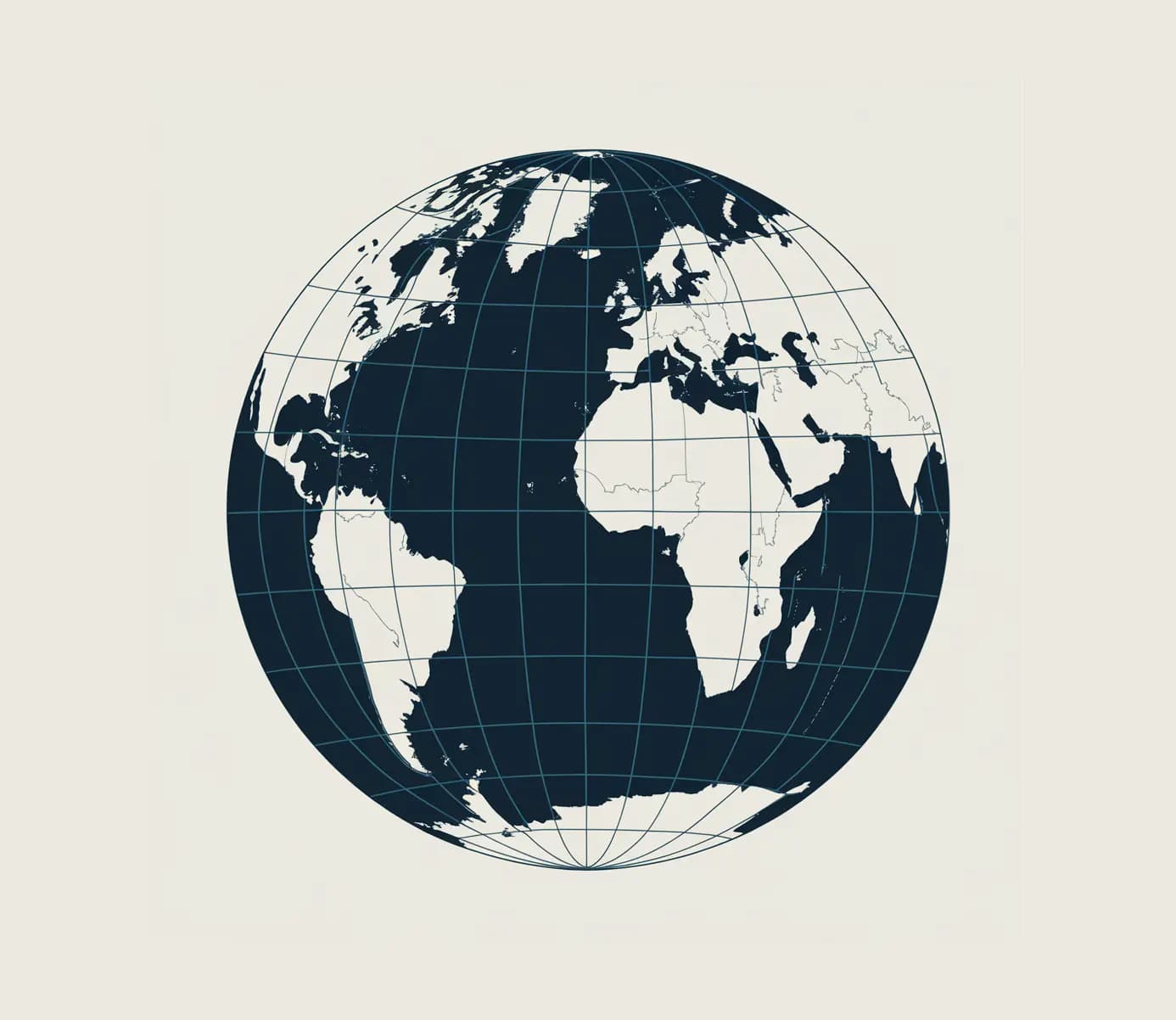
Universal Transverse Mercator (UTM) System: Mapping Earth with Precision
Whether it’s for urban planning, environmental monitoring, or responding to natural events, SkyFi’s platform uses precise mapping methods like the Universal Transverse Mercator (UTM) system to bring accuracy and accessibility to users worldwide. Let’s dive into the basics of how UTM zones work and why they’re useful for reliable, location-based mapping.
Understanding the Universal Transverse Mercator (UTM) System
The UTM system is a straightforward way to map locations across the globe. Unlike the traditional latitude and longitude system, UTM divides Earth into 60 large “slices,” or zones, each covering a different part of the globe. This setup allows for greater mapping accuracy within each region, which is ideal for applications needing specific, location-based insights. SkyFi integrates this approach to make data accessible and understandable, providing precise location mapping for users, from everyday explorers to industry professionals.
How UTM Zones Are Organized
Each of the 60 UTM zones covers a specific area of Earth, allowing for a more focused and reliable view of any location within that zone. Here’s how UTM zones help:
Simplified Mapping: By focusing on specific areas, UTM zones allow users to locate and analyze locations with a clear and reliable framework.
Local Relevance: Rather than dealing with global latitude and longitude coordinates, each UTM zone is a self-contained mapping area, allowing for greater ease and accuracy in local and regional projects.
The UTM Projection: What Makes It Different?
The UTM system differs from other mapping systems in how it displays each zone. By focusing on smaller sections of Earth, UTM provides a more accurate, distortion-free view that’s suited for areas with high data needs. This makes it an ideal choice for industries like agriculture, infrastructure monitoring, and environmental conservation, where accurate location mapping is essential.
Locating a Position Using UTM Coordinates
SkyFi’s platform enables users to find precise UTM coordinates for any location, making it easy to track areas over time or monitor changes on the ground. To locate a position in UTM, you simply identify the UTM zone, and SkyFi handles the rest, converting data into an accessible format for any specific area. The UTM-based approach supports a range of applications by offering consistent, easy-to-read coordinates, which are particularly helpful for local, regional, or industry-focused projects.
Special Cases: When Zones Are Adjusted
UTM zones are standardized, but some areas have specific adjustments. For example, areas around certain coastlines may have slightly adjusted zones to improve mapping accuracy. SkyFi applies these adjustments where needed, making sure that users have the most accurate location data for their area of interest.
FAQ on UTM Zones
What is the purpose of UTM zones? UTM zones are used to break the world into manageable sections, making it easier to map and measure areas with accuracy, especially for projects focused on specific regions.
How is UTM different from latitude and longitude? Latitude and longitude coordinates work globally, but UTM zones allow for a more local view, which is often more practical for regional mapping and specific location analysis.
Why does SkyFi use UTM? UTM provides a reliable framework for mapping precise locations, which SkyFi integrates to support industries that depend on accurate, easy-to-use geospatial data.
Can UTM be used everywhere? The UTM system is effective for most of the Earth’s surface. For areas near the poles, alternative mapping systems are used to maintain accuracy.
With SkyFi’s UTM-based system, you can access precise data without needing to dive into complex technical details. By simply selecting an area of interest, you gain reliable, accurate mapping data that helps make informed decisions in fields ranging from construction and agriculture to environmental monitoring. With SkyFi, advanced geospatial insights are only a click away, putting powerful data into the hands of anyone, anytime, anywhere.